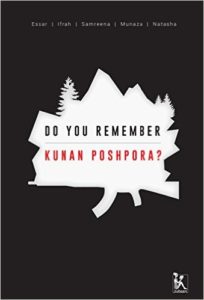Erotic Stories for Punjabi Widows: an Interview with Balli Kaur Jaswal
My interview with Balli Kaur Jaiswal on her new novel Erotic Stories for Punjabi Widows has been published on Bookwitty today, 8 May 2017. The interview is reproduced below.
 Balli Kaur Jaswal is a Singaporean-based author of Indian origin. She is the author of Inheritance, which won the Sydney Morning Herald’s Best Young Australian Novelist Award in 2014, and Sugarbread, a finalist for the 2015 inaugural Epigram Books Fiction Prize. Erotic Stories for Punjabi Widows is her third novel, for which film rights have been acquired. The novel’s premise is a young girl under the impression she will be leading a creative writing workshop at a gurdwara, or Sikh place of worship, in Southall, London. Instead, she is confronted with a room full of mostly bored Punjabi widows, some barely literate, who have enrolled in classes to pass the time. In an unexpected turn of events, the women discover they are able to narrate and share raunchy stories which are quickly transcribed by a young educated widow amongst their midst. Before anyone realizes it, the stories are being copied and circulated around London. Exploring the Punjabi Indian diaspora community via this vibrant group of women unearths a Pandora’s box of social mores. Despite its incredible title, Erotic Stories for Punjabi Widows is a fascinating exploration of how women fight for their space and how feminism is lived within the community today. Balli Kaur Jaswal kindly answered the following questions for Bookwitty:
Balli Kaur Jaswal is a Singaporean-based author of Indian origin. She is the author of Inheritance, which won the Sydney Morning Herald’s Best Young Australian Novelist Award in 2014, and Sugarbread, a finalist for the 2015 inaugural Epigram Books Fiction Prize. Erotic Stories for Punjabi Widows is her third novel, for which film rights have been acquired. The novel’s premise is a young girl under the impression she will be leading a creative writing workshop at a gurdwara, or Sikh place of worship, in Southall, London. Instead, she is confronted with a room full of mostly bored Punjabi widows, some barely literate, who have enrolled in classes to pass the time. In an unexpected turn of events, the women discover they are able to narrate and share raunchy stories which are quickly transcribed by a young educated widow amongst their midst. Before anyone realizes it, the stories are being copied and circulated around London. Exploring the Punjabi Indian diaspora community via this vibrant group of women unearths a Pandora’s box of social mores. Despite its incredible title, Erotic Stories for Punjabi Widows is a fascinating exploration of how women fight for their space and how feminism is lived within the community today. Balli Kaur Jaswal kindly answered the following questions for Bookwitty:
What sparked this story?
I’ve had a lifelong fascination with questions surrounding identity, migration, women’s sexuality and notions of honor in close-knit communities, among other things. Those themes are prevalent in all of my writing. About ten years ago, I spent some time in Southall, London’s Punjabi enclave and I knew it was the perfect setting for a novel which explored these ideas. I was particularly interested in how elderly traditional women experienced and expressed desire in these male-dominated communities, and I started questioning what would happen if I got those women together and gave them a space to talk freely about what they wanted.
Bringing together the concept of the Brothers, a young band of men who have been indoctrinated with a militant version of religion, along with the rising confidence of women in the local Sikh community is well done. Was it inspired by real events?
This is one of the strangest things about writing – you create a fictional character or scenario and then you see it play out in real life and you’re either thrilled or horrified. In my case, it’s the latter. I made up the Brothers, and through multiple drafts of the novel, I kept pausing and thinking, “Would Sikh men do this? Has the policing gotten this zealous and organized?” I decided that I could afford to ask the reader to take that leap with me. Then, a few months after the novel sold, I read reports in The Guardian about groups of British-born Sikh extremists in the UK protesting interfaith weddings in the gurdwara and intimidating the family members. I remember thinking, “Oh my goodness, it’s the Brothers.” It was heartening to read responses from moderate Sikhs in the UK decrying these acts and calling upon these people to focus on the important issues that need urgent addressing in the community, like domestic violence and alcoholism.
Linking the deaths of Maya, Karina and Gulshan to honor killings in the story is impressive. Was the subject difficult to research?
It did hit a raw nerve. I actually read about honor killings when I lived in the UK because around that time, Jasvinder Sanghera’s memoir Shame had just come out and there was a lot of talk about it. What she went through to escape a forced marriage, and the advocacy work that she so bravely pioneered, are remarkable and inspiring. A few years later, she published a memoir of her experiences in supporting honor crime victims. The stories were heartbreaking, and they served as a reminder that her experience was part of a wider problem that still affects girls in this generation. I think what struck me most was the idea that loyalty to the community overrode common sense and conscience. In one of her books, she recalled giving a speech in a Punjabi community in England about being a victim of forced marriage, and she mentioned her work in raising awareness about honor crimes. Afterwards, women lined up to meet her and a few whispered into her ear that they had stayed silent while rebellious daughters or nieces had been sent to India and “taken care of.” I thought about this moment a lot when I wrote this thread into the narrative – it made sense to me that once the women found their voice to discuss their suppressed desires, they’d also find the courage to speak up and act on bigger injustices.
Offering different perspectives of women—modern, young and confident (Nikki), young and conservative (Mindi), young widow (Sheena), distraught mother and lonely wife ( Kulwinder), is a fascinating journey in understanding how women operate in a conservative patriarchal structure. How did you achieve this? Did you need to work on separate character sketches or did they all come together as you were working on the novel?
The best way to create a character is to think about how others would react to them. Nikki was easy enough to conceive because she was a lot like me and so many women I knew in my early twenties. For Mindi, I wanted a character from that same generation to counter Nikki and introduce us to the conservative and traditional “going back to our roots” subset. Mindi calls out Nikki on her one-sided take on social justice and liberalism, and actually reveals herself as somebody with more autonomy than we initially think. Sheena was a sort of bridge from Nikki to the widows. Quite literally: she did some translating, but also she was young and accessible and they developed a friendship which brought Nikki into the fold. Kulwinder was the anathema to Nikki, and I enjoyed alternating their perspectives because it really felt like a cat and mouse game between the protagonist and the antagonist. I would say all of the characters pivoted off Nikki, which is how I usually write – start with the main character and work out who everybody else is and how they help or hinder her.
Your novel seems to represent the second wave of feminism very well. From its references to Fem Fighters and feistiness as displayed by Nikki to the more moderate opinions offered by her sister who focuses on exercising her choice, even if it veers towards conservatism. Even with the bibis, the band of widows, different shades of women exist but they represent a range of women’s voices that could be representative of feminist movements. Did this involve research or did it happen naturally as a consequence of living your feminism?
The research in this area was experiential and anecdotal. I didn’t read up on feminist theory while writing this novel—it was definitely more about the day-to-day applications and how they become complicated by other facts of life. I attended a liberal arts women’s college as an undergraduate which forever changed the way I looked at the world. I found that in the years after, and even now, I’m drawn to people who have that perspective as well. I’m a little surprised when I meet people (women and men) who flinch when you bring women’s rights to the conversation because it’s 2017; who is still regarding “feminist” as a taboo word?
The contrast between the open-mindedness of the widows compared to the more politically correct and careful opinions offered by the younger women such as Mindi is striking. Were these at any point modeled on real conversations and experiences you may have witnessed?
I really wanted to convey the idea that feminism comes in different forms and that one character can be conservative in some ways but quite progressive in others. We can also define modernity and independence depending on our contexts and what balance works for our circumstances. There isn’t a prescribed way to be a feminist; this is the major lesson for Nikki in the novel. Mindi and Nikki have differing definitions of “choice” and they exercise their independence in ways that put them at odds with each other. The widows come from an interesting perspective because they have been marginalized by patriarchal structures but they are also powerful matriarchal figures in a culture that respects and fears mothers. This is why there is room for them to speak up through these classes. I can’t pinpoint any actual conversations or experiences but I know that throughout my adult years, I have observed the various ways in which the same women who command respect are also silenced when their voices become too inconvenient for people in power.
A classic straitjacketing comment often used by women to ensure no one strays from the flock is “Women like us”. You use it sparingly but well in the novel. How well does the phrase sit with you?
I find it worrying when women buy into this narrative about how they should behave, but even more so when they start reprimanding other women. It’s an insidious way to maintain compliancy, and it has its roots in the larger policing carried out by men, especially in conservative communities. The fathers, brothers and uncles who want to keep “their women” in line are aware that there are spaces exclusively for women that they cannot enter, so certain self-appointed women do their bidding for them. “Women like us” sounds deceptively inclusive as well but it’s still about ownership – you can be part of the club but we’ll be charge of what you wear and how you speak.
Given how you show widows as women with real feelings and not individuals to be ignored, silenced and discarded, do you think that writing this novel will have repercussions on your personal life?
So far, I’ve received very positive responses from readers. The only repercussion I’ve faced is becoming a confessional for other people’s secrets, especially Indian women. They come to book signings and then they lean in and whisper these stories from their lives about their mothers doing special prayers after finding their birth control pills or their husbands being turned on by some of the saucier scenes in the novel. But I’m happy to listen!
What are the challenges that lie ahead for women’s movements?
Awareness of intersectionality is an issue. That’s the idea that there is no one-size-fits-all approach to feminism and especially that women from certain backgrounds are vulnerable to other forms of oppression which influence and compound their experience of sexism as well. I’ve experienced this firsthand; people who rally for feminist causes being quite ignorant of the hurdles faced by women from minority races. I know some feminists who will say, “I didn’t get that promotion because I’m a woman” but if you said, “I didn’t get that promotion because I’m a woman and I’m a minority,” they are dismissive or they say you’re playing the race card. I’m not sure where this glitch in the system came from—where if someone mentions suffering from more than one kind of institutional oppression, instead of empathizing, people get indignant and protective over their own stake in the issue. I hope we can resolve it with more open and judgment-free conversations.
Do you think diaspora fiction needs to be pinned down in the “thingyness of things” such as illustrated by Erotic Stories for Punjabi Widows and those of the Bengali women as seen in Chitra Bannerjee Divakurni’s novels to resonate effectively with readers across the world or would a more general form of literary fiction be equally powerful?
Readers connect to novels that they can identify with, and I think the days of navel-gazing singular “who am I” narratives are probably over. That element exists in all diaspora fiction of course (and arguably in all literary fiction regardless of the audience or the cultural background of the characters) but it needs to converge with a larger narrative. I think it’s an exciting time for diaspora fiction because readers want to be challenged and they’re open to nuance. Some exoticism still exists but readers have a more savvy experience of other worlds now.
Who are the writers and other creative people who have influenced your writing?
The list keeps growing but a very early influence was Judy Blume because she told those stories that we needed to know. Like most people who grew up with her novels, I felt as if there was finally an adult in my corner, somebody who understood and didn’t judge the confusion of growing up. A number of writers exploring the migrant experience in the UK have shaped my perspective as well – Andrea Levy, Nikita Lalwani, Zadie Smith, Sathnam Sanghera and Meera Syal to name a few.
Balli Kaur Jaiswal Erotic Stories for Punjabi Widows HarperCollins
8 May 2017



